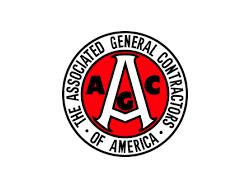Construction Firms Anticipate Payroll & Market Growth in 2016
Arlington, VA, January 7, 2015—Seventy-one percent of construction firms plan to expand their payrolls in 2016 as contractors expect a range of public and private markets to grow, according to survey results released by the Associated General Contractors of America and Sage Construction and Real Estate.
The survey, conducted as part of The Challenges Facing a Growing Industry: The 2016 Construction Industry Hiring and Business Outlook, indicates that contractors foresee a positive year despite tight labor conditions, regulatory burdens and IT security challenges.
Association officials noted that 71% of firms say they will increase their headcount in 2016. In most cases, however, that hiring will only lead to modest increases in the overall size of firms. Sixty-three percent of firms report their planned hiring will increase total headcount between 1% and 25%, while 8% report they will expand their headcount by more than 25% this year.
Among the 30 states with large enough survey sample sizes, 95% of firms in Kansas plan to expand their payrolls in 2016, more than in any other state. Meanwhile, 25% of firms in Pennsylvania report they plan to reduce headcount this year, more than in any other state.
Contractors expect a mix of private and public sector market segments will drive demand for construction in 2016. As measured by the net positive reading–the percentage of respondents who expect a market segment to expand versus the percentage who expect it to contract–respondents are most optimistic about the outlook for retail, warehouse and lodging (21% net positive).
Respondents were also positive about the outlook for hospital (19% net positive), private office (19%), multifamily residential (14%) and higher education (13%) construction. And they are optimistic about the prospects for K-12 school (12%) and public building (12%) construction, particularly in contrast to last year when contractors were generally pessimistic about all public construction market segments.
Contractors are less optimistic about other segments, including manufacturing (7% net positive), other transportation (3%), power (1%) and direct federal (-1%) construction market segments. Yet it is important to note that this year's Outlook survey was completed prior to enactment of federal legislation to increase funding for highways, transit and direct federal agency spending, and to extend the expiration date for wind, solar and other tax provisions helpful to construction, association officials noted. Construction firms continue to cope with shortages of available workers. Seventy percent of firms report they are having a hard time finding either salaried or craft professionals. And 69% of respondents predict that labor conditions will remain tight, or get worse, during the next twelve months.
Firms are responding to worker shortages by increasing pay and/or benefits. Forty-nine percent of respondents report they have increased base pay rates, 30% report they are providing incentives and/or bonuses and 23% report they have increased their contributions to employee benefits to retain or recruit workers. And nearly half of firms report they plan to increase their investments in training and development compared to 2015.
